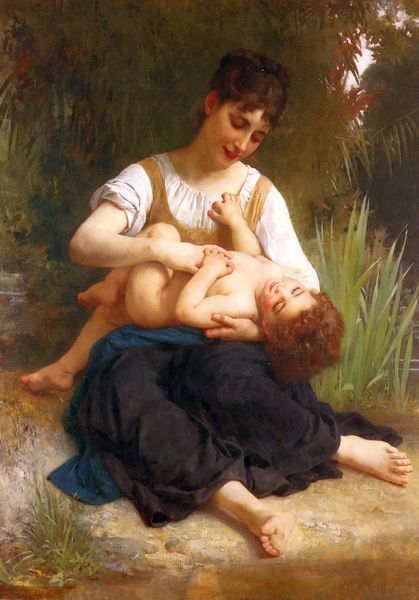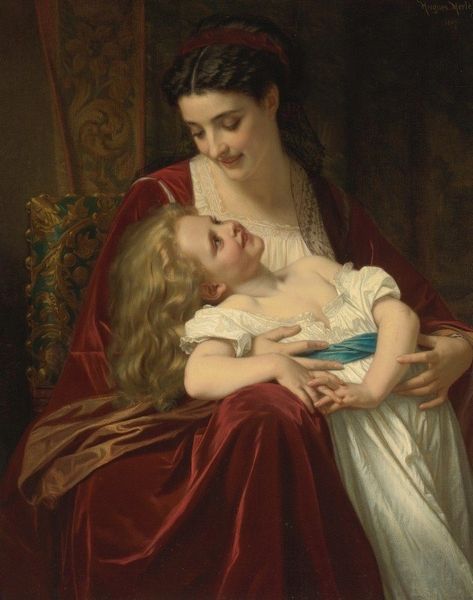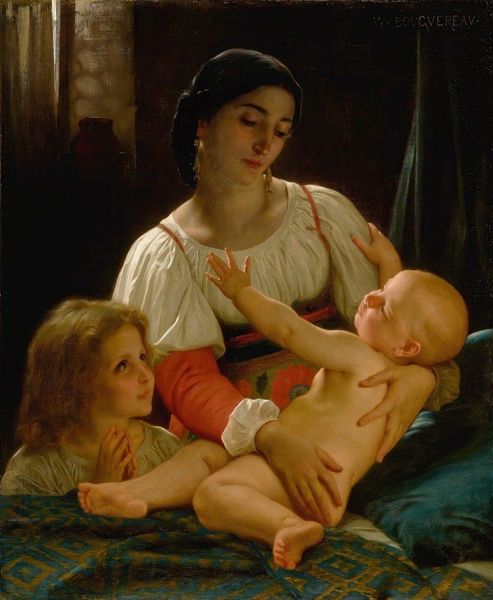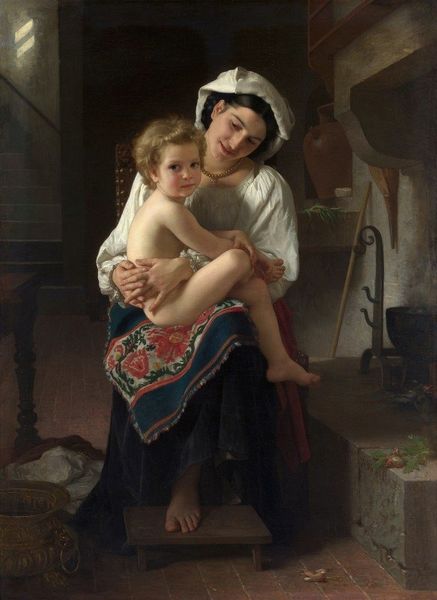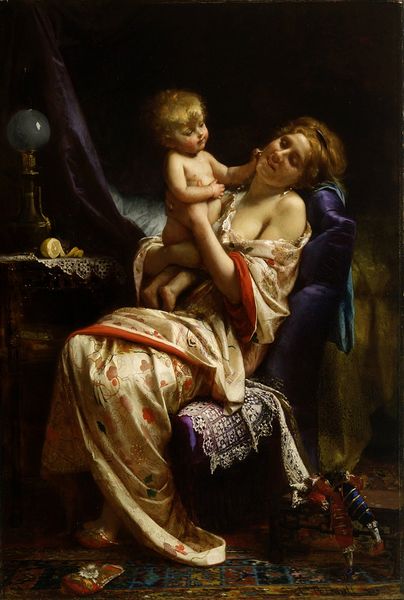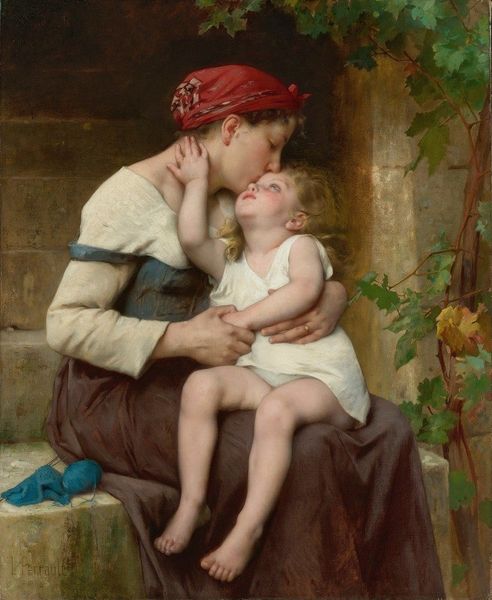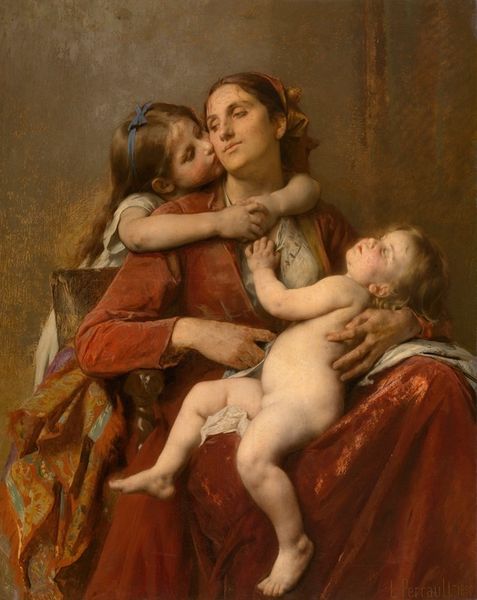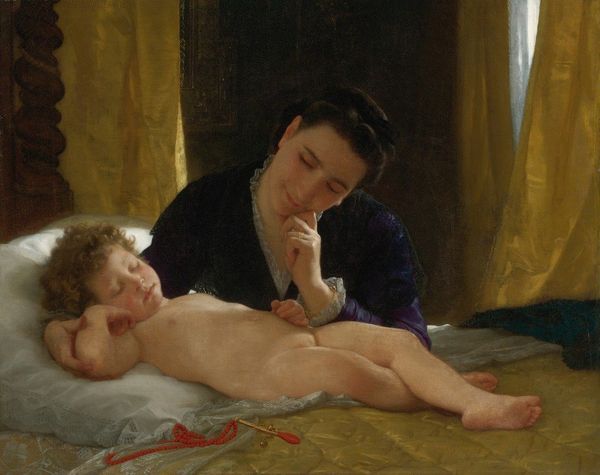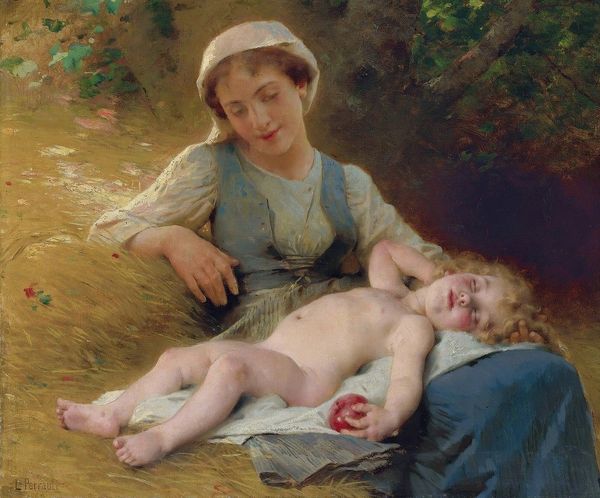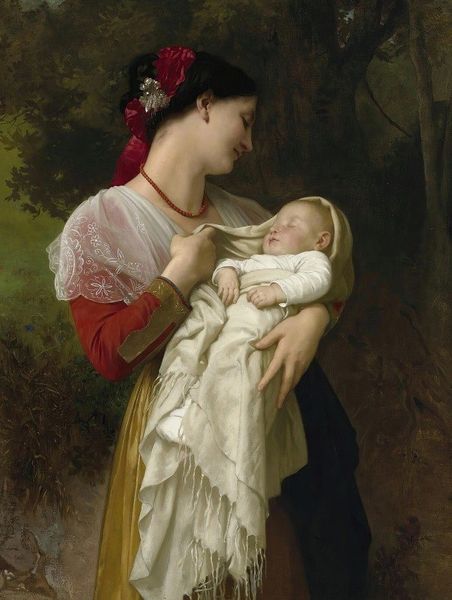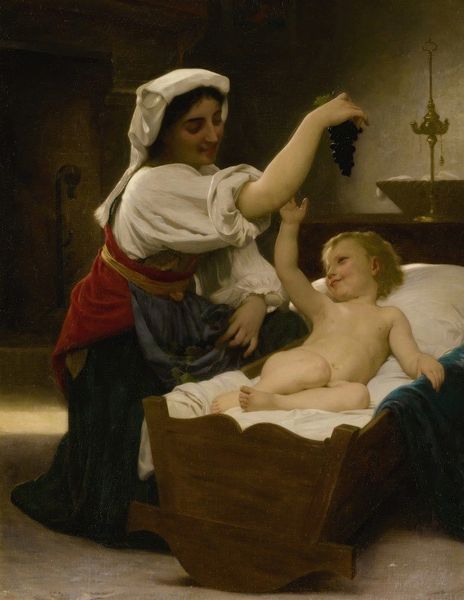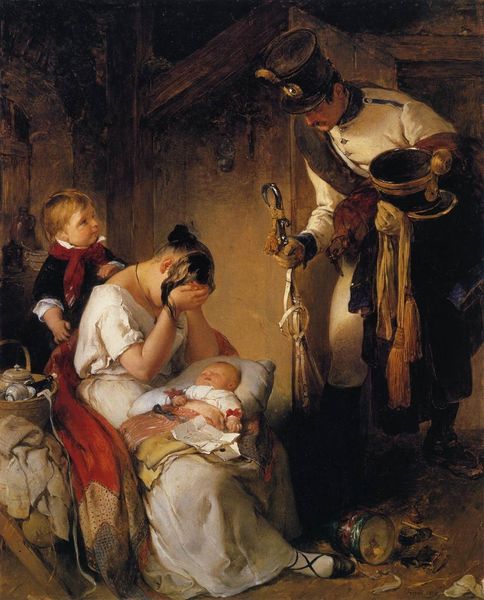
Copyright: Public Domain: Artvee
Curator: Here we have William Bouguereau’s "Berceuse," completed in 1873. It’s an oil painting. Artist: It's lovely, really—a Madonna and child without the halo, full of the most gentle fatigue. The quiet in this painting almost hums. Curator: Note Bouguereau's technique. He often depicted idealized peasants; he’s drawing here from Romanticism’s sentimentality and blending it with the slick finish of Academic Art. The level of detail, down to the woven fabric of the mother’s vest, is remarkable and tells a tale of skilled labor. Artist: Skilled, yes, but also considered. You know, there's this softness that comes not just from the brushstrokes, but the palette itself. Earthy reds and greens grounded with that creamy white chemise—it creates a real tenderness. And look how the light just barely grazes the sleeping child; the whole composition just aches with this quiet love. Curator: What I find compelling is how it elevates the domestic. Genre painting like this, while seemingly innocuous, helped to reinforce social norms, and these paintings became quite popular with the burgeoning bourgeoisie. Their domestic lives mirrored what they saw on the walls of the Salons. Artist: I get that, but isn't there something more? Think of the sheer amount of work that went into it; that kind of dedication imbues the image with its own emotional energy. You see the skill of the artisan reflected in the tranquil repose of the mother, the trust the baby shows—and there it is. That hum of human affection. It nearly bursts out from the canvas. Curator: That human element can't be denied, absolutely. Though it's fascinating how consumer culture at that moment latched on to representations of an ideal home and laboring class mothers like this— Artist: Ultimately it is hard not to just lose myself in its light, the sheer bliss of quiet sleep depicted—so much warmth in something so still. Curator: Well, seeing the material means employed allows me to consider those domestic ideals of the moment from all sides, and how they still impact expectations of women today.
Comments
No comments
Be the first to comment and join the conversation on the ultimate creative platform.
